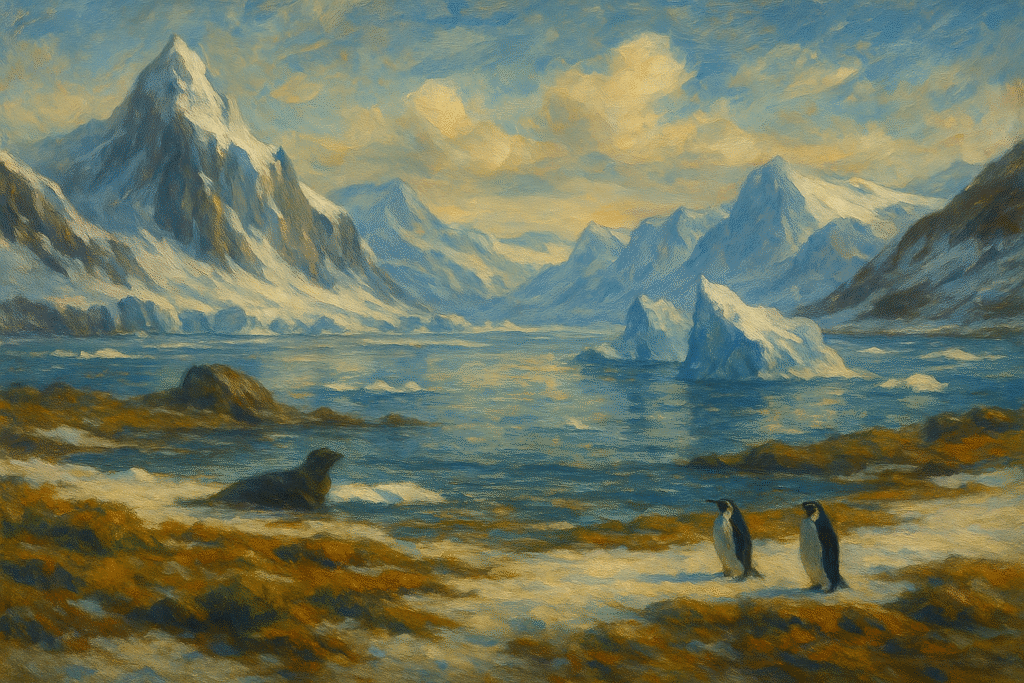Cold deserts are frigid, arid regions with unique ecosystems that blend extreme temperatures with minimal precipitation. Unlike hot deserts that sizzle under the sun, cold deserts like Antarctica and parts of Greenland showcase a chillingly different, yet fascinating ecological treasure trove shaped by their harsh climates.
Understanding Cold Deserts: Core Characteristics
Cold deserts are defined by their extreme low temperatures and scarce rainfall, differing significantly from their hot desert counterparts. According to the U.S. Geological Survey (USGS), these regions form a distinctive ecological niche due to their geographical and climatic conditions. These deserts experience harsh winters with temperatures dropping to bone-chilling lows.
Climate Variability in Cold Deserts
In cold deserts, the climate is characterized by significant temperature swings between day and night, often resulting in a surprisingly rich biodiversity. This climate variability is both a challenge and a catalyst for the unique adaptations we observe in these ecosystems.
Unique Vegetation Adaptations in Cold Deserts
Cold desert vegetation has evolved remarkable adaptations to thrive in such harsh conditions. Plants like the desert sagebrush and various succulents exemplify nature’s resilience, showcasing their ability to live with minimal water. Their survival strategies enhance our understanding of plant adaptation in extreme environments.
Why Are Polar Deserts Unique? Delving into Extremes
Polar deserts, the coldest of all desert types, are found in polar regions and display dry climates. Antarctica and parts of Greenland are quintessential polar deserts, offering unique ecological contrasts to temperate cold deserts. These regions are predominantly ice-covered with distinct ecological features.
Ecosystems and Biodiversity in Polar Deserts
Polar deserts are home to specialized ecosystems that foster biodiversity among mosses, seals, and specially adapted organisms. This biodiversity highlights the interconnectedness of life, even within some of the planet’s harshest environments.
Climate Change Impact on Cold Desert Ecosystems
Cold desert ecosystems are uniquely vulnerable to climate change, as highlighted by the Intergovernmental Panel on Climate Change (IPCC). As global temperatures rise, these fragile ecosystems may face unprecedented shifts in species composition and habitat, emphasizing the need for immediate conservation efforts.
Desertification in Cold Deserts: A Looming Threat
Desertification is a pressing concern for cold deserts, similar to its impact on warmer deserts. The progressive loss of productivity in these ecosystems signals warnings for conservationists. Sustainable practices become crucial to mitigate human activities’ adverse effects on these environments.
The Role of Sustainable Practices in Cold Deserts
Incorporating sustainable practices in cold desert conservation strategies is essential. By fostering responsible interactions with these environments, we can mitigate human-induced adversities, ensuring these unique ecosystems thrive.
Comparing Cold Deserts and Hot Deserts
| Aspect | Cold Deserts | Hot Deserts |
|---|---|---|
| Temperature | Extremely low | Extremely high |
| Precipitation | Minimal and often snow | Minimal and in the form of rain |
| Main Regions | Antarctica, Greenland | Sahara, Arabian Desert |
| Predominant Flora | Sagebrush, lichens, mosses | Cacti, flowering shrubs |
| Wildlife | Seals, penguins, arctic foxes | Camels, reptiles, rodents |
This comparison table provides a clear snapshot of the differences between cold and hot deserts.
Addressing Common Queries about Cold Deserts
What Animals Live in Cold Deserts?
Cold deserts house diverse wildlife adapted to extreme conditions. Common species include:
* Antarctic Seals: Thrive on icy lands.
* Penguins: Adapted to sub-zero temperatures.
* Desert Foxes: Found in certain temperate cold deserts.
* Moss and Lichen: Baseline vegetation for supporting life.
How Do Cold Deserts Form?
Cold deserts form in regions where precipitation is scarce, and temperatures remain excessively low. Geographical factors, such as being situated at high altitudes or within rain shadow areas, contribute to their formation.
Conclusion: Fostering Conservation Awareness
Cold deserts, with their unique ecosystems and climatic challenges, reflect nature’s adaptability and resilience. Understanding these regions broadens our insight into Earth’s diverse environments. We must promote conservation efforts to protect these frigid wonders from the looming threat of climate change.
Explore further into cold desert conservation strategies, or delve deeper into the intricacies of polar biodiversity by checking related articles on our platform, enhancing both knowledge and awareness.


